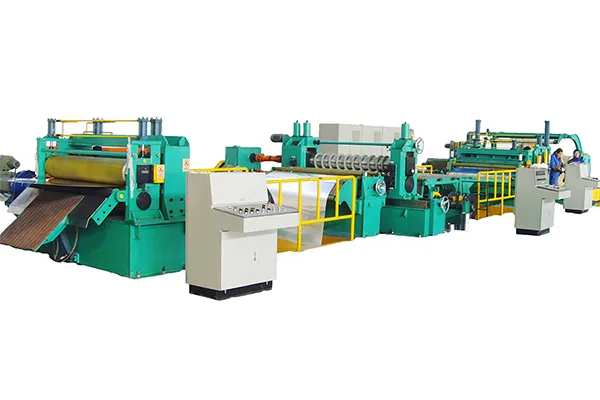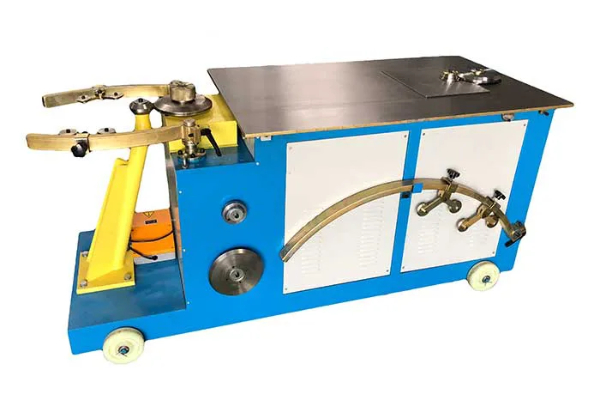
DIY Tips for Operating Sheet Metal Folding Machines
- By:Metmac
- 2024-07-23
- 161
For DIY enthusiasts and hobbyists, sheet metal folding machines offer a convenient and cost-effective way to create complex shapes and designs from metal sheets. However, operating these machines requires proper knowledge and safety precautions to ensure accurate results and prevent accidents. Here are some essential DIY tips to help you operate sheet metal folding machines safely and effectively:
Safety First
– Always wear appropriate safety gear, including safety glasses, gloves, and earplugs.
– Keep the machine well-maintained and inspected regularly to prevent malfunctions.
– Ensure the machine is properly grounded to prevent electrical hazards.
– Clear the work area of any obstacles or debris to avoid tripping hazards.
Calculating and Setting Up
– Determine the desired bend angle and calculate the appropriate bend radius based on the material thickness.
– Set up the bending dies correctly and make sure they are properly aligned before folding.
– Clamp the sheet metal securely in place to prevent it from slipping during the folding process.
Operating the Machine
– Use the machine’s controls to set the desired bending force and adjust the speed accordingly.
– Engage the bending process slowly and steadily, applying even pressure throughout the fold.
– Monitor the bending process closely to check for any irregularities or over-bending.
Accuracy and Consistency
– To ensure accurate bends, use a bending stop or gauge to limit the fold length.
– Mark or score the sheet metal where the bend is desired to provide a guide.
– Practice on scrap pieces before folding the actual workpiece to get a feel for the machine and achieve consistent results.
Working with Different Materials
– Adjust the bending parameters based on the material thickness and type.
– Use lubricants or coatings to reduce friction and prevent scratches or damage to the metal surface.
– Be aware of the different bending properties of different materials, such as aluminum, steel, or copper.
Troubleshooting Common Issues
– Cracks in the folded metal can indicate excessive bending force or improper die alignment.
– Uneven or inconsistent bends can be caused by improper clamping or workpiece slippage.
– Machines not bending properly may require maintenance or calibration.
– If the machine stops working, immediately shut it off, unplug it, and consult the manufacturer’s instructions.
Additional Tips
– Use quality tools and materials to ensure precision and durability.
– Regularly clean and lubricate the machine to keep it in good working condition.
– Explore different bending techniques, such as box bending, edge bending, and flange bending.
– For complex or large projects, consider hiring a professional sheet metal fabricator for assistance.
-
Sheet Metal Rolling Machine for Sale: Finding Precision and Durability with METMAC
2025/12/09 -
Press Brake Bending Machine: Engineering Precision with METMAC
2025/12/09 -
CNC Sheet Bending Machine: Precision Redefined with METMAC
2025/12/09 -
Sheet Metal Roll Forming Machines: The Precision of METMAC Engineering
2025/12/09
-
Advanced Sheet Metal Rolling, Laser Cutting, and Folding Machines for Precision Fabrication
2025/10/31 -
High-Performance Sheet Metal Bending and Cutting Machines for Modern Fabrication
2025/10/31 -
High-Quality Sheet Metal Equipment for Sale: Efficient Solutions for Modern Manufacturing
2025/10/31 -
High-Performance Sheet Metal Equipment for Sale: Forming and Shearing Solutions for Modern Fabrication
2025/10/22
-
Understanding the Role and Function of Steel Strip Slitting Machines
2024/05/11 -
Maintenance Tips for Longevity of HVAC Duct Machines
2024/05/11 -
Innovations in Steel Strip Slitting Machine Design and Technology
2024/05/11 -
Improving Accuracy in Metal Fabrication with Laser Metal Shear Machines
2024/05/11
-
A Guide to the Latest Innovations in Sheet Metal Folding Machines
2024/11/29 -
Key Features to Consider When Investing in a Sheet Metal Folding Machine
2024/11/28 -
Enhancing Precision with Advanced Sheet Metal Folding Machines
2024/11/27 -
How to Choose the Right Sheet Metal Folding Machine for Your Workshop
2024/11/26







